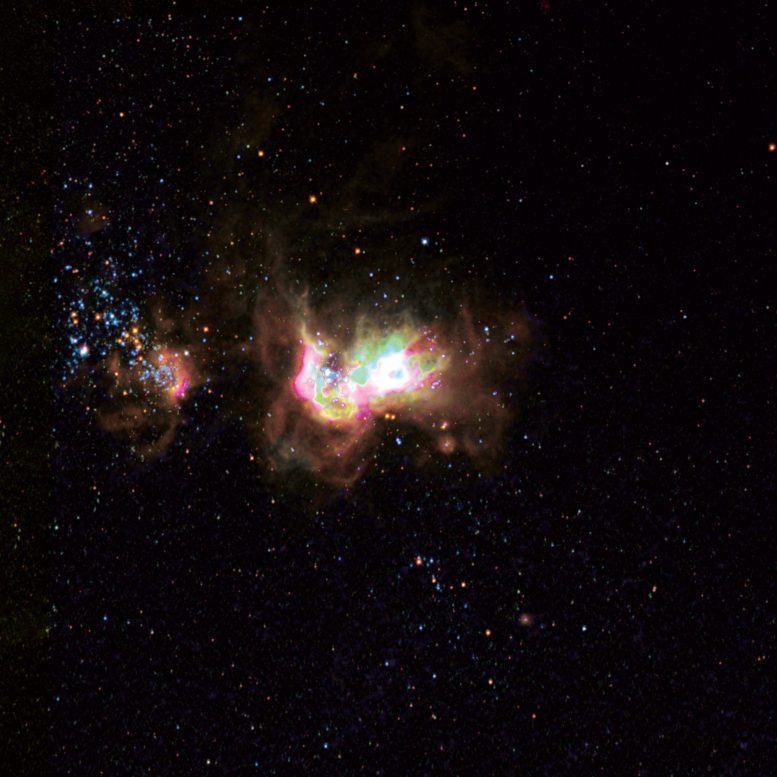
Observations of the dwarf galaxy Markarian 71 with infrared and optical telescopes resolve a problem in infrared astronomy and allow better measurements of the composition of galaxies and interstellar dust clouds. Composite image of Markarian 71 from the Hubble Space Telescope. Credit: Hubble Space Telescope/NASA
A problem that has plagued astronomers working in the infrared has been resolved through a study utilizing data from both terrestrial and sky-based telescopes. The findings, which were published in Nature Astronomy on April 20, could aid in the production of more precise observations regarding the composition of the universe using instruments such as the James Webb Space Telescope.
“We’re trying to measure the composition of gases inside galaxies,” said Yuguang Chen, a postdoctoral researcher working with Professor Tucker Jones in the Department of Physics and Astronomy at the University of California, Davis.
The majority of elements apart from hydrogen, helium, and lithium are formed inside stars. As a result, astronomers can comprehend how many and what kinds of stars are being formed in a distant object by studying the composition and distribution of heavier elements, particularly the ratio of oxygen to hydrogen.
Astronomers use two methods to measure oxygen in a galaxy, but unfortunately, they give different results. One common method, collisionally excited lines, gives a strong signal, but the results are thought to be sensitive to temperature changes, Chen said. A second method uses a different set of lines, called recombination lines, which are fainter but not thought to be affected by temperature.
The recombination line method consistently produces measurements about double those from collisionally excited lines. Scientists attribute the discrepancy to temperature fluctuations in gas clouds, but this has not been directly proven, Chen said.
Chen, Jones, and colleagues used optical and infrared astronomy to measure oxygen abundance in dwarf galaxy Markarian 71, about 11 million light-years from Earth. They used archived data from the recently retired SOFIA flying telescope and the retired Herschel Space Observatory, as well as making observations with telescopes at the W.M. Keck Observatory in Mauna Kea, Hawaii.
SOFIA (Stratospheric Observatory For Infrared Astronomy) was a telescope mounted in a Boeing 747 aircraft. By flying at 38,000 to 45,000 feet, the aircraft could get above 99% of the water vapor in Earth’s atmosphere, which effectively blocks infrared light from deep space from reaching ground level. A joint project of NASA and the German space agency, SOFIA made its last operational flight in September 2022 and is now headed for a museum display in Tucson.
The Herschel Space Observatory, named after astronomers William and Caroline Herschel, was an infrared space telescope operated by the European Space Agency. It was active from 2009 to 2013.
A surprising result
With data from these instruments, Chen and Jones examined oxygen abundance in Markarian 71 while correcting for temperature fluctuations. They found that the result from collisionally excited infrared lines was still 50% less than that from the recombination line method, even after eliminating the effect of temperature.
“This result is very surprising to us,” Chen said. There is no consensus on an explanation for the discrepancy, he said. The team plans to look at additional objects to figure out what properties of galaxies correlate with this variation, Chen said.
One of the goals of the James Webb Space Telescope, launched in 2022, is to make infrared observations of the composition of distant galaxies in the first billion years of the universe. The new results provide a framework for making these measurements with the JWST and the Atacama Large Millimeter Array in Chile.
Reference: “Accurate oxygen abundance of interstellar gas in Mrk 71 from optical and infrared spectra” by Yuguang Chen, Tucker Jones, Ryan Sanders, Dario Fadda, Jessica Sutter, Robert Minchin, Erin Huntzinger, Peter Senchyna, Daniel Stark, Justin Spilker, Benjamin Weiner and Guido Roberts-Borsani, 20 April 2023, Nature Astronomy.
DOI: 10.1038/s41550-023-01953-7
Additional co-authors on the paper are: Ryan Sanders and Erin Huntzinger, UC Davis; Dario Fadder, Jessica Sutter, and Robert Minchin, SOFIA Science Center, NASA Ames Research Center; Peter Senchyna, Observatories of the Carnegie Institute for Science, Pasadena; Daniel Stark and Benjamin Weiner, Steward Observatory, University of Arizona; Justin Spilker, Texas A&M University; and Guido Roberts-Borsani, UCLA. The work was financially supported in part by NASA. SOFIA was jointly operated by the Universities Space Research Association, Inc., and the Deutsches SOFIA Institut.
The W.M. Keck Observatory is operated as a scientific partnership among the California Institute of Technology, the University of California, and NASA, with financial support from the W.M. Keck Foundation. The researchers would like to thank the Hawaiian community for the privilege of allowing them to conduct observations on Mauna Kea, which plays a significant cultural and religious role.

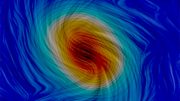
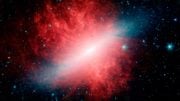

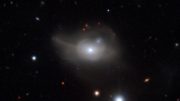
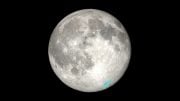
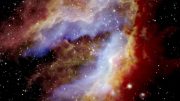
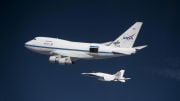

Be the first to comment on "A Surprising Result – Making Better Measurements of the Composition of Galaxies"